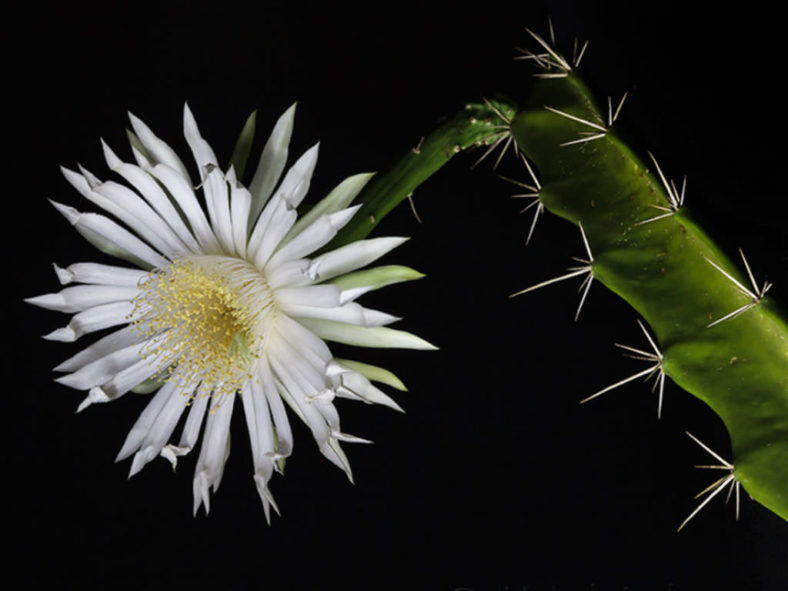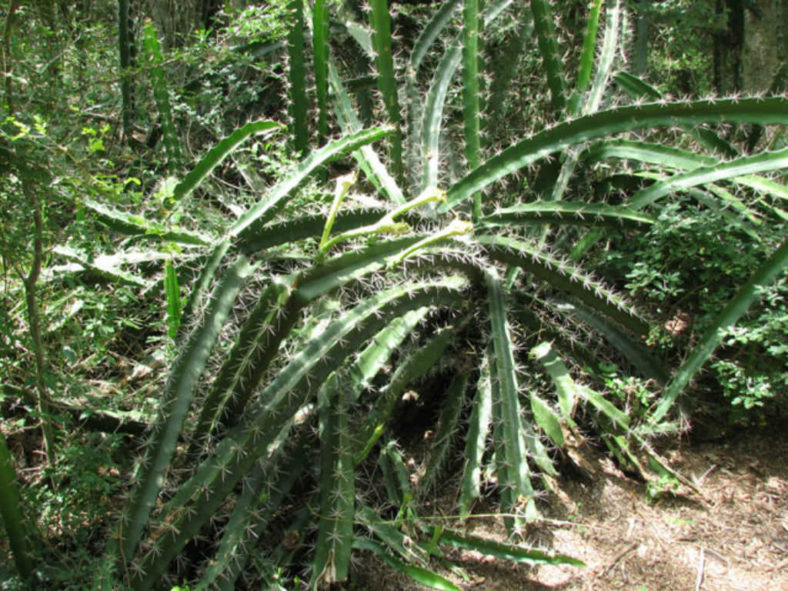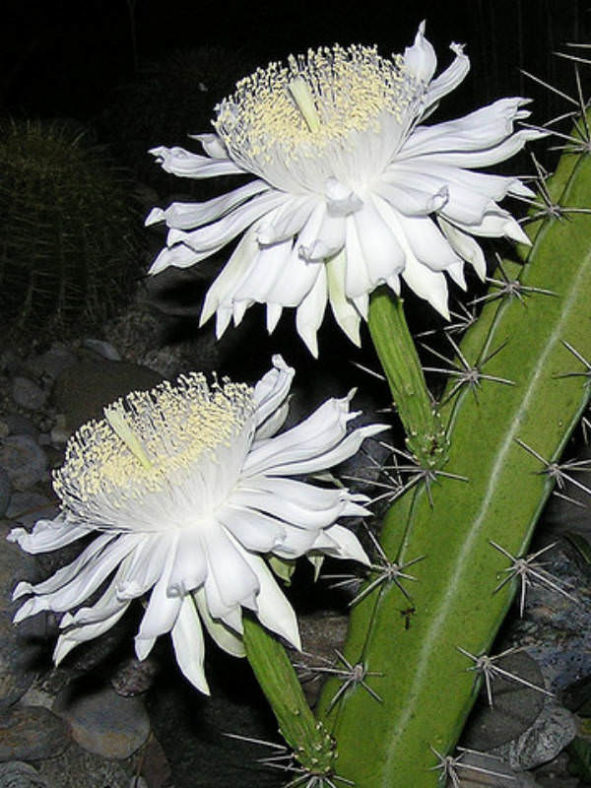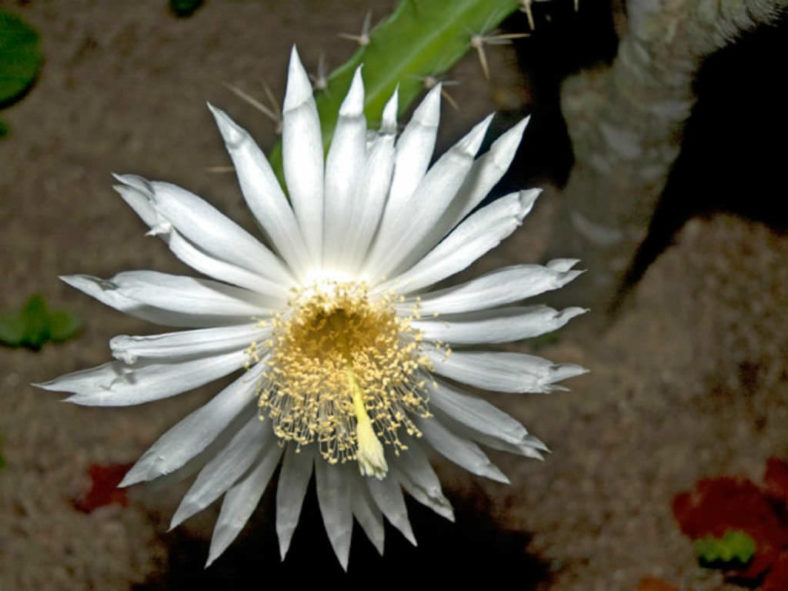Scientific Name
Acanthocereus tetragonus (L.) Hummelinck
Common Name(s)
Barbed Wire Cactus, Dildo Cactus, Night-blooming Cereus, Triangle Cactus, Sword Pear
Synonym(s)
Acanthocereus pentagonus, Cactus tetragonus, Cereus tetragonus
Scientific Classification
Family: Cactaceae
Subfamily: Cactoideae
Tribe: Hylocereeae
Genus: Acanthocereus
Description
Acanthocereus tetragonus is a columnar cactus with dark green stems that usually have 3 to 5 ribs lined with clusters of spines. It can grow up to 23 feet (7 m) tall, branching near the base, sometimes forming well-developed trunks. The stems can reach up to 3 inches (8 cm) in diameter. The areoles are grey and up to 1.2 inches (3 cm) apart. Each areole bears 1 to 2 central and 6 to 8 radial spines. The spines can grow up to 1 inch (2.5 cm) long.
The flowers can reach up to 6 inches (15 cm) in length and 8 inches (20 cm) in diameter. They have greenish-white outer tepals, pure white inner tepals, and creamy white pistils. The bright red fruits are ovoid to oblong and can measure up to 3.2 inches (8 cm) long.

Hardiness
USDA hardiness zones 9a to 11b: from 20 °F (−6.7 °C) to 50 °F (+10 °C).
How to Grow and Care
Like most cacti, Cereus are fairly low-maintenance and hardy. Ensure they receive enough water without becoming waterlogged, especially during the summer, and fertilize them for the best results. If the roots have become black or overly soft, the cactus could be experiencing root rot. Cut away the affected parts and replant. Most gardeners interested in cacti should be able to cultivate these without much problem.
If your Cereus outgrows its container, it may become necessary to repot it. If so, ensure the soil is dry and remove the pot. Knock away old soil, prune away rotted or dead roots, and then replace it in a new pot and backfill with fresh soil. Do not overwater cacti planted in new pots, as this can lead to root rot. The plant should be left dry for about a week and then watered lightly.
These cacti propagate pretty easily from cuttings. Sever a branch and replant in moist, well-drained soil.
Learn more at How to Grow and Care for Cereus.
Origin
Acanthocereus tetragonus is native to Southern Florida and the Lower Rio Grande Valley of Texas in the United States, Mexico, Central America, the Caribbean, and northern South America.
Forms and Cultivars
Links
- Back to genus Acanthocereus
- Succupedia: Browse succulents by Scientific Name, Common Name, Genus, Family, USDA Hardiness Zone, Origin, or cacti by Genus
Photo Gallery
Click on a photo to see a larger version.



